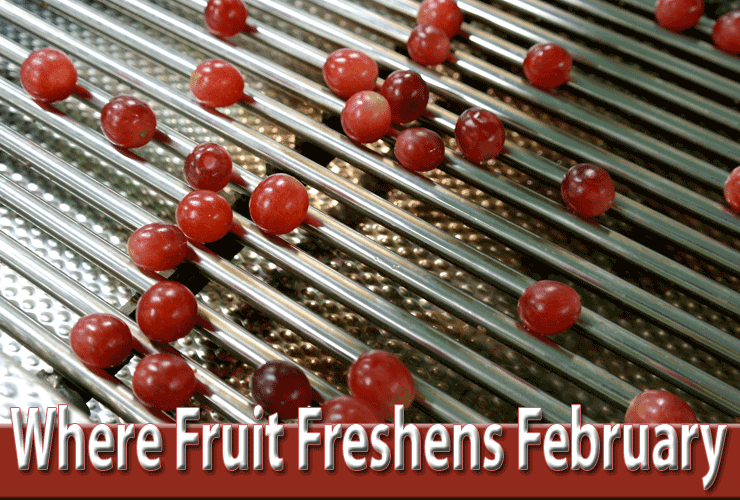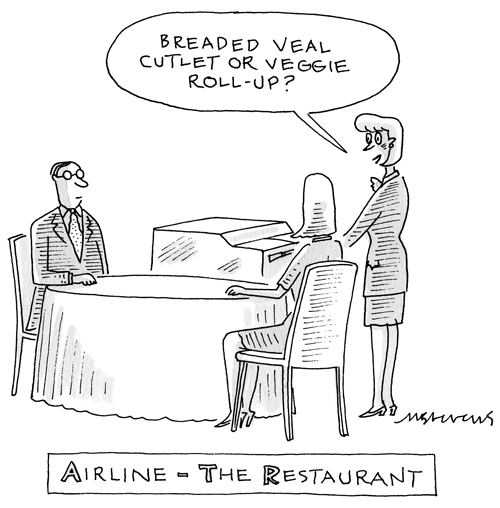
ZTI Mechatronics BV, Netherlands: "Grape destemming machine"
separates the fruit from the vine. The machine will be in action in Berlin.
 here
are a number of well-known industry events that we have on our personal
radar—even if we choose not to attend—for which we receive
in-depth media coverage in all industry publications, such as the IATA
World Cargo Symposium, Air Cargo Americas, and Air Cargo Europe every
other year at Transport Logistik. here
are a number of well-known industry events that we have on our personal
radar—even if we choose not to attend—for which we receive
in-depth media coverage in all industry publications, such as the IATA
World Cargo Symposium, Air Cargo Americas, and Air Cargo Europe every
other year at Transport Logistik.
Often overlooked but sometimes more important
are those less well-known industry events where specific niche products
are featured and the focus is on the subject, which is the core business
for all attendees.
One of these events known mostly to folks
within the perishable trade is the Fruit Logistica in Berlin, an annual
event that brings together producers, carriers, packers, handlers, and
wholesalers of fresh produce of any kind.
This year, the event will take place from
February 5th until February 7th in the German Reichshauptstadt Berlin,
lately—as FT has reported—notorious for the hiccups and delays
as Berlin capital airport BBI continues to flounder.
But flounder is a fish, and BBI is an airport,
and this story is about fruit in February.
While for most cargo professionals the perishable
business is a niche product seldom in the focus of the business, it should
be noted that such special cargoes warrant much higher yields than general
cargoes. However, transporting perishables
by any mode of transport requires particular knowledge, equipment, trained
staff and facilities specifically equipped for the purpose of storing
and handling the various perishable cargoes, because the requirements
applicable to fresh flowers (PEF) significantly differ from those applicable
to meat (PEM), fish and seafood (PES), the various fruits and vegetables
(PEP) or temperature-controlled pharmaceuticals (PIL).
Some of these commodities require active
temperature control (ACT), and some require being kept cold (COL) or even
frozen (FRI/FRO) in narrowly defined temperature ranges.
Most consignments require import licenses’
(LIC) and phytosanitary inspections upon arrival and often a quick ramp-transfer
(QRT) when connecting from one flight to another.
The Fruit Logistica will likely attract
in excess of 60,000 visitors from more than 130 states (2013 figures:
58,000), a clear indicator of the importance of this business.
Sure enough, nourishment and nutrition is
a global business, and in developed nations consumers have become used
to fresh strawberries and cherries in winter, Durian all year round, and
fresh sushi in the deli around the corner.
This would not be possible without a highly
complex supply chain for these perishable commodities, and while yields
are high so is the risk of produce being spoiled:
Wrong harvesting, excessive time for the
surface transport to ports and airports, insufficient or non-existing
chilling or freezing, wrong packing, excessive moisture (or too little
of it), excessive cold and heat, handling in the required manner—all
these factors are paramount to ensure that the product on our supermarket
shelves or in the deli’s cooler can still be sold for the envisioned
price.
The 2,500 exhibitors expected at Fruit Logistica
2014 confirm that Germany is (with the U.S. on pole position) the “second
largest market for organic products worldwide, which is confirmed by the
latest statistics published by the International Federation of Organic
Agriculture Movements (IFOAM).”
“Since 2000,” (FL event management
claims) “sales have substantially increased by 300 percent and consumption
of organic products continues to rise at a steady pace.”
The market for fresh convenience products
in Germany presents a very mixed picture—while demand for such products
is high in certain urban areas where income is high and attractive career
opportunities are available, in other areas imported fresh produce is
not (yet) an item on the average Mrs. Joe Lunchbucket’s shopping
list.
Unlike the French and Dutch market where
high-quality, perishable foodstuff is in demand all year round, the primary
factor for Germans is still the price.
In fact, food in Europe cannot be found
for less money than in Germany.
Another factor, surprisingly, is the “green
movement,” which in Germany has always been a driving factor.
In Germany the green movement advocates
using “local” produce of the season instead of imported fruits,
flowers, and perishables because of the carbon footprint and the costs
of transportation associated with imported fresh products.
Lately, however, views have become more
diverse in Germany as well, since one must acknowledge that whole economies
depend on such trade and that, with long-term vision, it may be both fairer
and cheaper to purchase Valentine flowers from Kenya or Colombia, or bananas
from Costa Rica, in order to support local development and production
there, than it is to shell out further development aid money.
Another factor that ultimately fuels growth
in the perishable trade is the simple fact that Germany has become a country
of an additional 400,000 immigrants in 2013, which is a 20-year record-high
figure.
These figures include other European community
citizens (who do not require a visa or work permit) but do not include
temporary residents such as foreign managers or specialists temporarily
employed in Germany.
However, both of these groups significantly
boost the demand for certain fresh products and aid in the popularization
of these products among Germans.
For example, the popularity of pizza and
pasta in Germany is driven by the sizable Italian minority that poured
into Germany as “guest workers,” as they were called, in the
1960’s, with the advent of the “Wirtschaftswunder” (Economic
Wonder)
Fruit Logistica once again underlines its
status as an innovative springboard for the international fresh produce
trade.
"Future Lab," a new series of
events, will present products, projects, and solutions that can enhance
the fruit and vegetable industry with innovations in the coming years,
or contribute significantly to optimization along the value chain.
A core part of Fruit Logistica 2014 will
be what the organizers call their “Future Lab” where the latest
developments in the perishable trade and supply chain are presented, discussed,
and thought through. “These projects and some others on the menu
in Berlin next month can potentially have a significant impact on the
medium-term development of the fresh produce sector," says Gérald
Lamusse, Fruit Logistica Global Brand Manager.
“In half-hour sessions, the ‘Future
Lab’ will cover topics such as ‘Quantum leap in lettuce breeding,’
to ‘Information superhighway for fruits & vegetables,’
‘Customized Fruit – to your health!,’ ‘Water –
scarce, valuable, indispensable’ and ‘Fighting Black Sigatoka,’”
Lamusse declares.
Watching a “leap in lettuce”
is perhaps not your favorite kind of floorshow, but the message at least
is clear.
Today in most parts of the world, the times
are long gone where farmers, fishermen, and other producers just needed
to carry their products to the next town to reach market.
In 2014, feeding seven billion people worldwide
is one thing, but feeding them in quite different ways is likely the greatest
challenge of modern times.
This year’s official partner country
of Fruit Logistica will be Argentina, a country in strong reliance on
its agricultural sector: Argentina exports 1.9 million tons of fruits
and vegetables annually, of which 32 percent goes to their largest export
trade partner, the European Community. Argentina has, in line with an
increase in the overall boost of prosperity within Latin America, reported
an annual growth rate of 11.2 percent over the past 10 years within the
fresh produce sector alone.
So as Paul Harvey used to say: “Stand
by for news,” because Fruit Logistica 2014 will surely have plenty.
Jens
|





